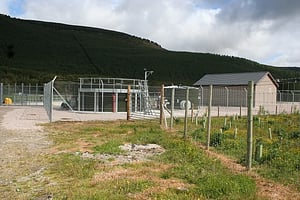
The United States as a whole is urbanizing, so what happens to rural regions as they lose population? Due to their physical remoteness and sparse population, these areas pay a premium for water and sewer utilities—a problem that gets exacerbated as populations decline. Tens of millions of households, mostly in the eastern half of the nation, rely on septic tank systems when they lack a centralized sewer system, but these also lead to a slew of environmental and health issues that small neighborhoods must then address. A rural community in Delaware is attempting to remedy its wastewater challenges in a way the state hasn’t seen before.
Bridgeville, Delaware in rural Sussex County is starting its first non-profit wastewater treatment plant. The state government helped identify this opportunity by creating a task force within its USDA Rural Development office. Over the course of two years, the task force has tackled the complicated matter of maintaining older rural community wastewater systems. Sussex County alone has approximately 80 small communities, so finding a solution that’s possible to replicate would benefit the entire state, and potentially beyond.
With the support of federal funding, non-profit organizations Delmarva Community Wellnet Foundation, Diamond State Sustainability Corporation and Southeast Rural Community Assistance Project have come together to help create the Clean Water Solutions (CWS) program. CWS has gained federal funding through two grants totaling $55,000. Water Online reports that “the first will go towards setting up the non-profit utility company and the second will go towards organizing an engineering and environmental report for the proposed local Country Glen wastewater system.” With stakeholders in the local, state and federal level, there are many who are working towards the endeavor’s success.
Previously, Bridgeville Homeowner Association president, Mike Mills, was the go-to person when it came to the town’s septic problems. Tending to these issues consumed a significant portion of his time— even when there were other matters that required his attention. He was not alone in his frustration. The National Association of Home Builders found that in the Northeast more than half of new homes are built with septic systems, despite the health risks they pose. There are severe consequences when septic systems contaminate surface and ground waters with disease-causing pathogens and nitrates. Bridgeville will find relief with its new wastewater treatment plant.
The non-profit trio behind the CWS program hopes to make an impact on rural areas across the country. Federal funding has made the non-profit program possible and is available to other non-profits looking to solve wastewater problems within their communities as well. One of the critical steps CWS will be taking is creating a wastewater treatment plant, thereby addressing the heavy reliance on septic systems. This action will not only have a positive impact on the community’s health, but also on the environment as well. If you're interested in learning more about septic systems, get introduced with the EPA’s overview here:
https://www.wateronline.com/doc/delaware-set-to-open-first-ever-non-profit-wastewater-treatment-plant-0001
https://globenewswire.com/news-release/2017/09/05/1107798/0/en/Tidewater-s-Expertise-Tapped-to-Create-Delaware-s-First-Non-Profit-Wastewater-Utility.html
https://www.epa.gov/small-and-rural-wastewater-systems/funding-sources-small-and-rural-wastewater-systems
https://www.rd.usda.gov/programs-services/water-waste-disposal-loan-grant-program
http://www.circleofblue.org/2015/world/infographic-americas-septic-systems/
Image courtesy of Anne Burgess via https://www.geograph.org.uk/photo/846048

